Record of parasitic oomycetes on neotropical copepods in aquatic environments of Northwestern Patagonia (Argentina)
Registro de oomicetos parasíticos em copépodes neotropicais em ambientes aquáticos da Patagônia Noroeste (Argentina)
Roberto Daniel Garcia; Fabián Gastón Jara; Mónica Mirta Steciow
Abstract
Keywords
Resumo
Resumo::
Palavras-chave
References
BURNS, C.W. Fungal parasitism in a copepod population: the effects of
BURNS, C.W. Fungal parasitism in a freshwater copepod: components of the interaction between
CUASSOLO, F., NAVARRO, M.B., BALSEIRO, E. and MODENUTTI, B. Effect of light on particulate and dissolved organic matter production of native and exotic macrophyte species in Patagonia.
DICK, M.W. Straminipilous fungi. Systematics of the Peronosporomycetes including account of the marine straminipilous protists, the plasmodiophorids and similar organisms. Dordrecht: Kluwer Academic Publishers, 2001.
GARCIA, P.E. and DIÉGUEZ, M.C. Vulnerability of Patagonian planktonic copepods to fluctuations in temperature and UVR.
GARCIA, R.D., GARCIA, P.E. and REISSIG, M. Sexual size dimorphism in calanoid copepods (Centropagidae) from Patagonia (Argentina).
GARCIA, R.D., REISSIG, M. and DIÉGUEZ, M.C. Parabroteas: El pequeño gigante de la Patagonia.
GARCIA, R.D., JARA, F.G., STECIOW, M.M. and REISSIG, M. Oomycete parasites in freshwater copepods of Patagonia: effects on survival and recruitment.
HUNTLEY, M.E. and LOPEZ, M.D.G. Temperature-dependent production of marine copepods: a global synthesis.
JOHNSON, T.W., SEYMOUR, R.L. and PADGETT, D.E.
KIØRBOE, T. Sex, sex-ratios, and the dynamics of pelagic copepod populations.
LI, C., LUO, X., HUANG, X. and GU, B. Influences of temperature on development and survival, reproduction and growth of a calanoid copepod (
MITCHELL, S.E., ROGERS, E.S., LITTLE, T.J. and READ, A.F. Host−parasite and genotype-by-environment interactions: temperature modifies potential for selection by a sterilizing pathogen.
PEROTTI, M.G., DIÉGUEZ, M.C. and JARA, F.G. Estado del conocimiento de humedales del norte patagónico (Argentina): aspectos relevantes e importancia para la conservación de la biodiversidad regional.
PHILLIPS, A.J., ANDERSON, V.L., ROBERTSON, E.J., SECOMBES, C.J. and VAN WEST, P. New insights into animal pathogenic oomycetes.
REISSIG, M., MODENUTTI, B., BALSEIRO, E. and QUEIMALINOS, C. The role of the predaceous copepod
REDFIELD, G. and VINCENT, W. Stages of infection and ecological effects of a fungal epidemic on the eggs of a limnetic copepod.
ROSSETTI, G. Fungal parasitism in freshwater calanoid population: consequences and possible mechanisms involved in the infection process.
STECIOW, M.M. Estudio cuantitativo de los oomycetes del río Santiago y afluentes (Buenos Aires, Argentina).
TOMPKINS, D.M., CARVER, S., JONES, M.E., KRKOŠEK, M. and SKERRATT, L.F. Emerging infectious diseases of wildlife: a critical perspective.
VALOIS, A.E.
VALOIS, A.E. and BURNS, C.W. Parasites as prey:
VALOIS, A.E. and POULIN, R. Global drivers of parasitism in freshwater plankton communities.
Submitted date:
01/28/2019
Accepted date:
05/26/2020
Publication date:
08/03/2020

